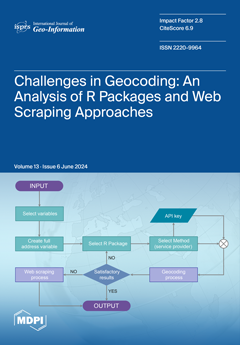Air pollution has become an increasing concern in the Mekong region due to seasonal vegetative burning triggered by related anthropogenic activities and climate change. While the assumption of a correlation between agriculture burning and air pollution is a common postulation, little evidence exists on the association between fire incidents and air pollution concentrations. The current study explores the relationship between satellite-derived fire occurrence, land surface characteristics, and particulate matter 2.5 (PM
2.5) concentrations for the five Lower Mekong countries, namely Cambodia, Laos, Myanmar, Thailand, and Vietnam, in an effort to gain new insights into fire distributions related to air quality. Publicly available daily active fire hotspots from the VIIRS satellite instrument, annual land cover products from the MODIS satellite, and mean monthly ground-level PM
2.5 estimates from the V5.GL.04 database were analyzed in two relational assessments; first, the distribution of VIIRS active fire counts and fire radiative power (FRP) temporally and spatially and secondly, the correlations between the monthly VIIRS active fire counts, cumulative monthly FRP and mean monthly PM
2.5 estimates per country and land cover type. The results suggest a statistically significant positive correlation between monthly fire counts, cumulative FRP, and PM
2.5 estimates for each country, which differ based on land cover. The strongest correlation between monthly fire incidences and PM
2.5 estimates was found in the case of Myanmar. For all countries combined, fires detected in forests displayed the highest correlation with monthly PM
2.5 estimates. This study demonstrates the use of the VIIRS active fire product and provides important insights into temporal and spatial fire distributions as baseline information for fire prevention and mitigation strategies in the Mekong region.
Full article





